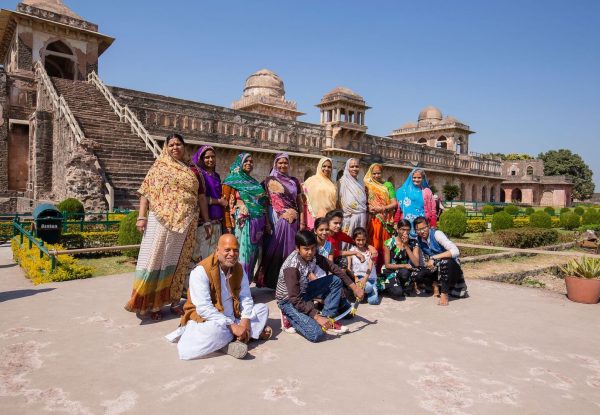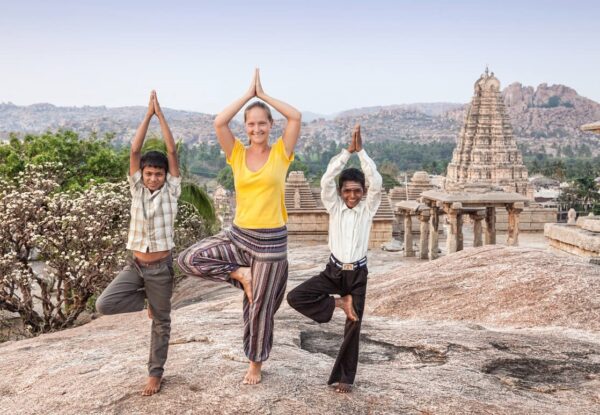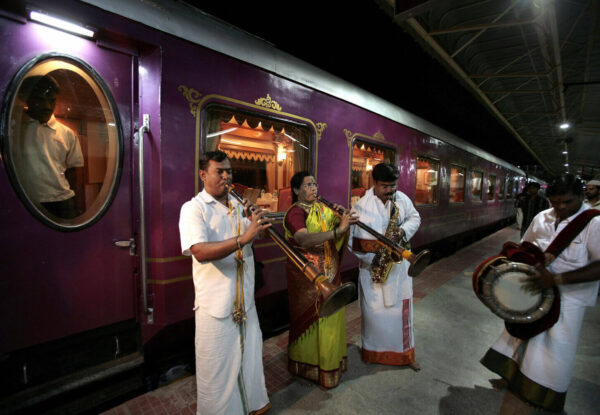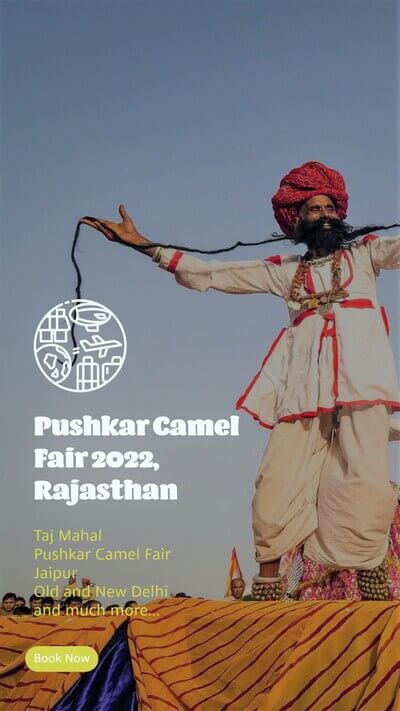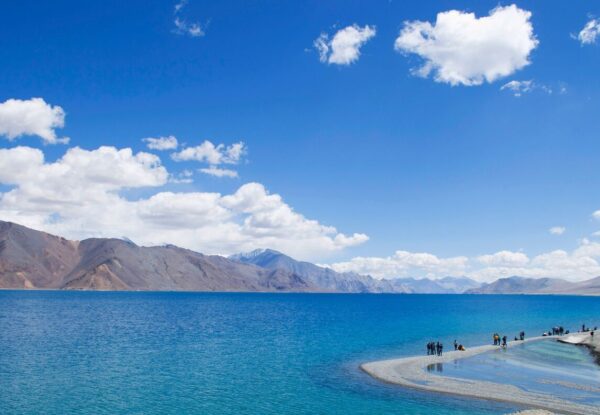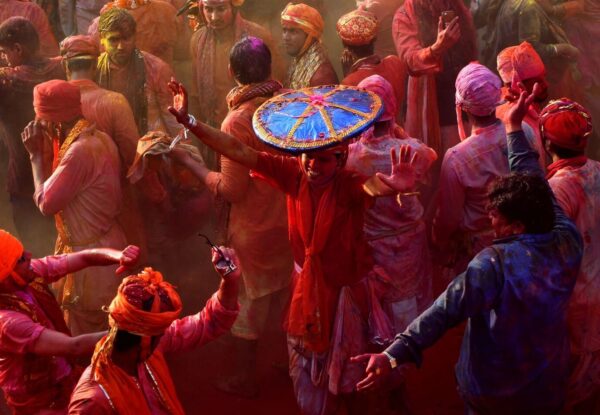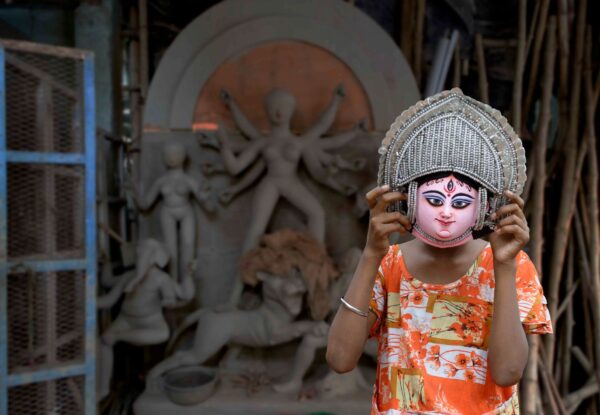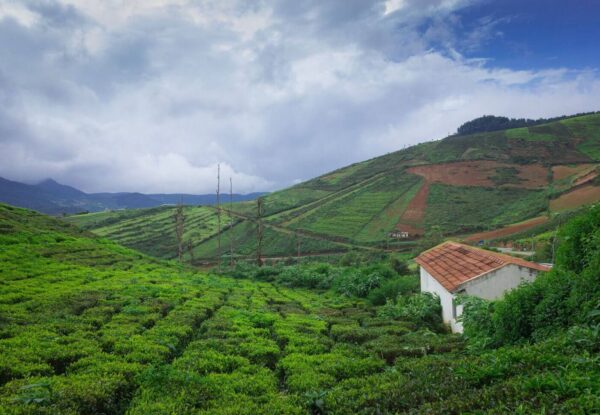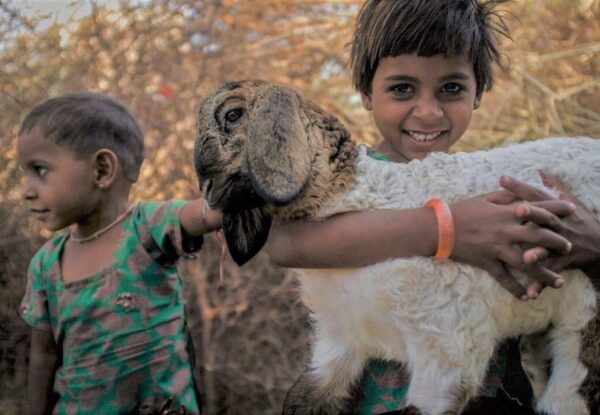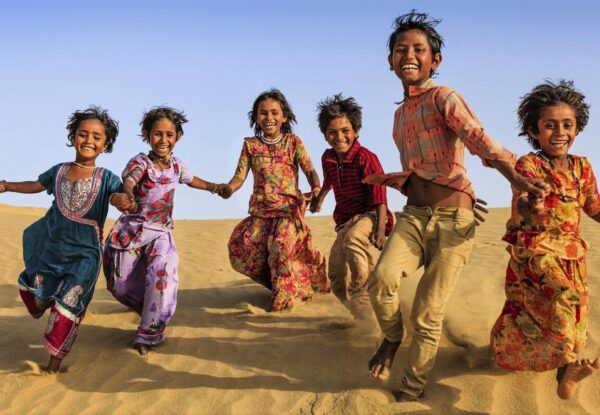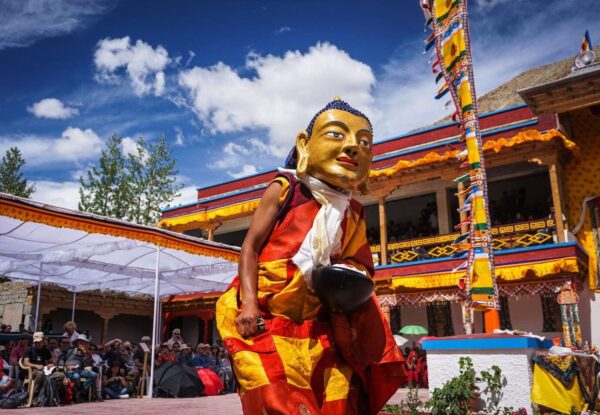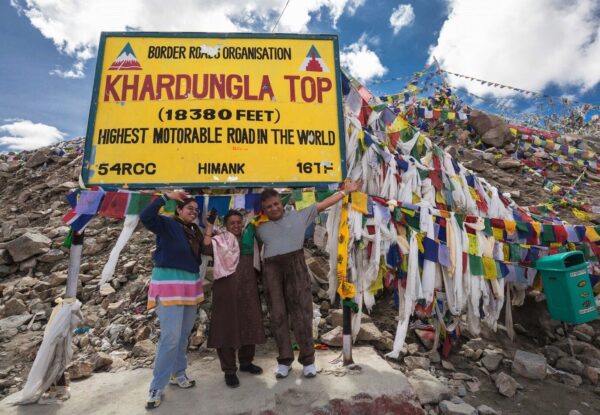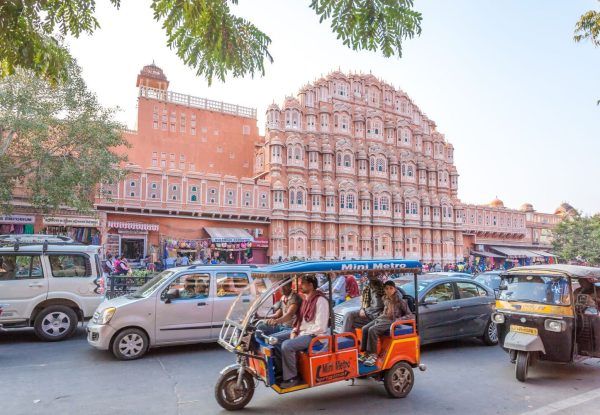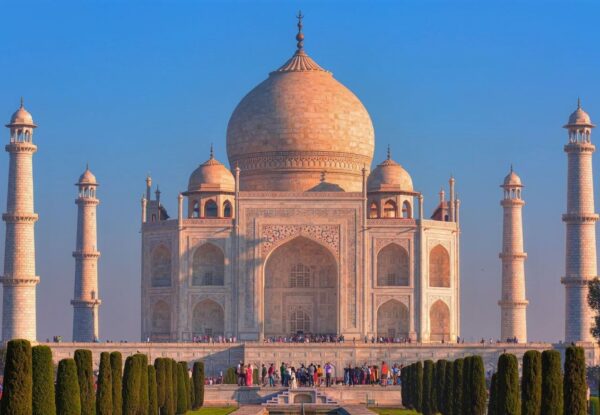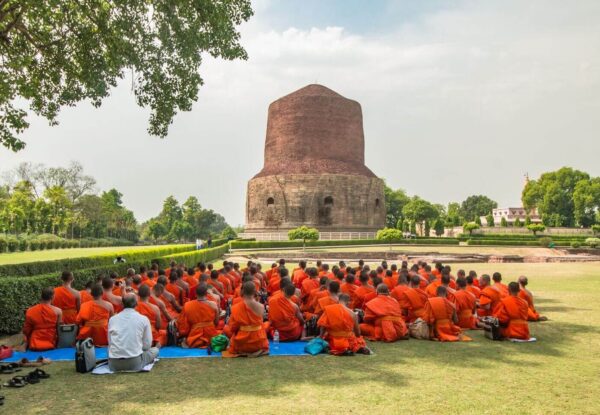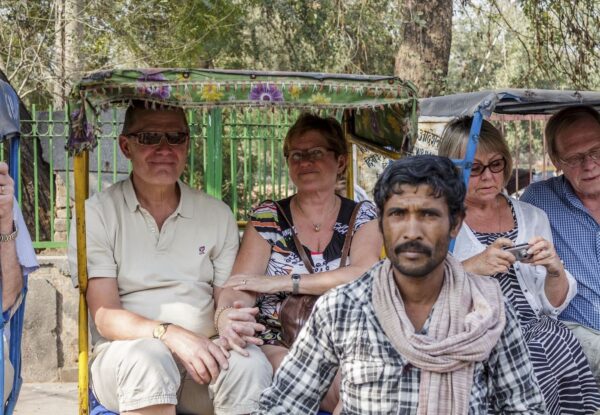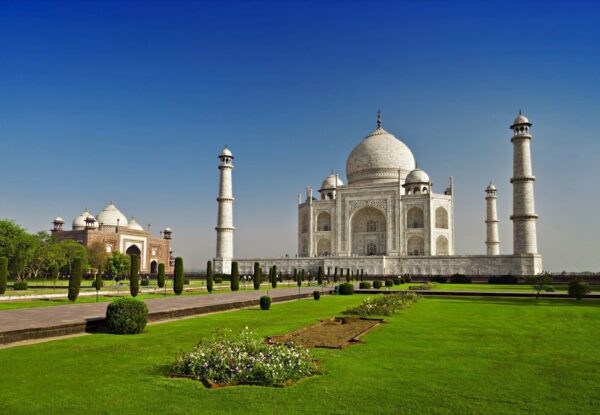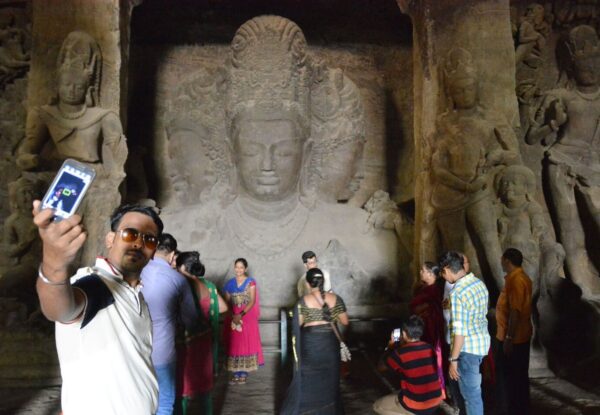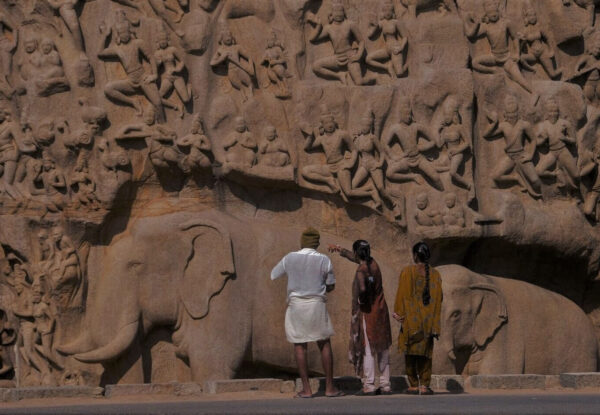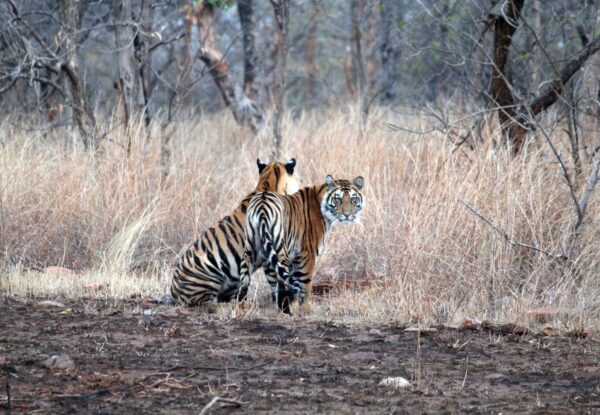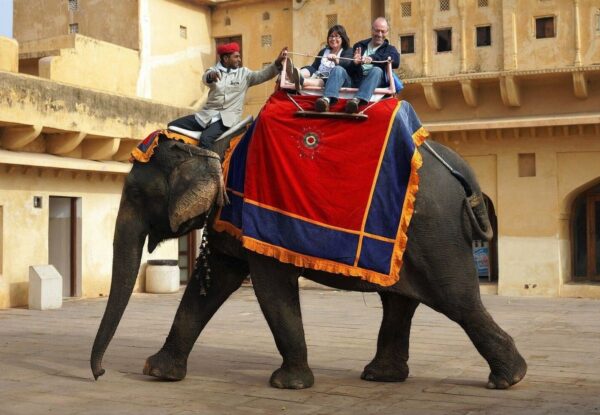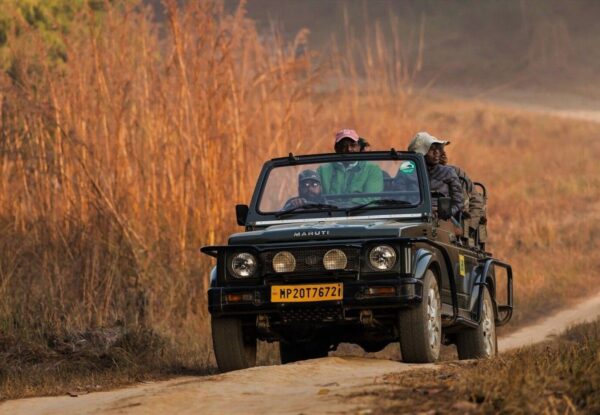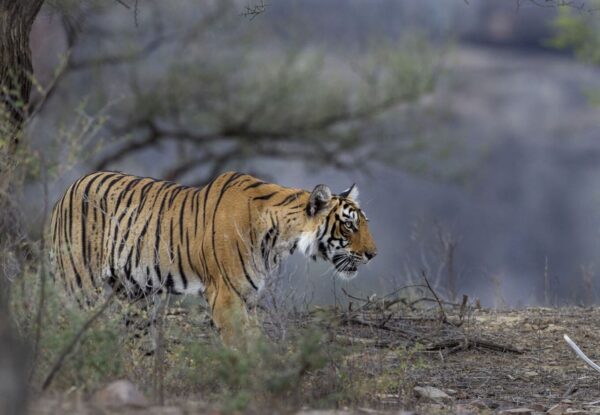Highlights of the Madhya Pradesh Tour – Kaleidoscope of Cultures and Wildlife of Central India
Trip Details
Nicknamed the Heart of India because of its central location, the state of Madhya Pradesh is the historical home to countless grand monuments and natural beauty. The mystical atmosphere of legendary pilgrimage sites and the fascinating discovery of untouched nature in the realm of the Tigers top off the Madhya Pradesh Tour program!
• Venture deep into tiger territory at two of Madhya Pradesh’s three big tiger parks: Kanha National Park and Bandhavgarh National Park
• Blush at the erotic carvings on the World Heritage exquisite temples in Khajuraho
• Raft the Betwa River in Orchha before drying off with a stroll around the village’s well-preserved palaces & temples
• Admire the 12000 years old Rock paintings at Bhimbetka
• Gawp at the Great Stupa of Sanchi, built by Buddhism embraced Mauryan emperor Ashoka, after the repentant of the horrors he had inflicted on Kalinga in 262 BC
• Escape the heat of the plains at the ruined city of Mandu, a fortress town that became the setting for many a tale of love, loss, death and victory
• Absolve all your sins during a bathe in Maheswar or Omkareshwar in the Narmada River, the mighty and cleanest river of India

India your way, your route, your style
» Price based on two persons in a double room
» Prices are in USD Excluding international flights
» Do you prefer to travel alone or would you like to come to India with a group of friends? We will be happy to tailor-made your tour program that meets all your wishes and needs
| Travel Period | PRICE PER PERSON | |
|---|---|---|
| Apr 1, 2024 – Mar 31, 2025 | from $2225 (Deluxe) | INQUIRE NOW |
| Apr 1, 2024– Mar 31, 2025 | from $2575 (Luxury) | INQUIRE NOW |
Would you like to have the trip tailored to your wishes?
Our itineraries are only examples and suggestions and can be customized individually. For example, a trip can be shortened or extended with additional destinations or monuments, the hotels can be a mix of 4 and 5 star etc. Let us know your personal wishes so that we can adapt the trip to your wishes. Connect with our travel expert for a 1:1 consultation and receive your obligation free travel proposal. Together with the travel request we will send you the hotel list so that you can get a picture of the hotels selected on the internet. We promise ✔Competent and Friendly Guides ✔Expert Drivers ✔Best Hotels ✔24/7 Support. Read more on Why Vacation India?
Get in Touch: info@vacationindia.com / +91-99274-65808 (India Calling & Whatsapp) / USA/Canada: 1 (888) 414-6804
Services Included
- 15 days individual travel from New Delhi to New Delhi
- 14 Nights in a double room or single room in selected hotels according to the booked category
- Daily breakfast
- A high quality air-conditioned car with driver at your disposal during your entire stay
- Round trip, sightseeing and all excursions as mentioned in the tour program
- Transfers airport – hotel – airport
- Services of an English-speaking guide
- 3 exclusive Jeep Safaris in Bandhavgarh National Park
- Morning Boat Safari and Afternoon Jeep Safari in Chambal Wildlife Sanctuary
- All Meals during your stay in Bandhavgarh National Park
- All Meals during your stay in Chambal Wildlife Sanctuary
- Boat Ride in River Narmada in Omkareshwar
- All entrances to monuments as described in the tour program
- Rickshaw ride in Old Delhi
- 2-liter bottles of mineral water per person per day
- 24 hours contact in India
- All taxes and fees, parking, tolls and interstate taxes etc
Services not included
- International and Domestic Flights
- Any type of travel insurance
- Optional tour to the Taj Mahal and Red Fort in Agra
- Visa fees
- Main meals not mentioned in the Inclusions
- Separate camera and video charges during the visits
- Expense of personal nature like tipping, laundry, telephone-fax calls, alcoholic beverages, camera-video camera fee at monuments, medical expenses, etc
There are no reviews yet. Be the first one to write one.
To receive the list of Hotels selected for this tour, please email us at info@vacationindia.com
Keywords: central india madhya pradesh tour, madhya Pradesh central india tour
Similar Tours You May Like
India Impressions
Mumbai ➜ Aurangabad (Ajanta & Ellora Caves) ➜ Indore ➜ Mandu ➜ Maheshwara & Omkareshwar ➜ Ujjain ➜ Bhopal ➜ Bhimbetka Caves and Bhojpur ➜ Jhalawar ➜ Rawatbhata ➜ Bundi ➜ Chittorgarh ➜ Mumbai or Delhi
Best of Kashmir and Leh Ladakh
Fly from New Delhi to Srinagar (Kashmir) ➜ Gulmarg ➜ Pahalgam ➜ Sonamarg ➜ Kargil ➜ Mulbekh ➜ Lamayuru Monastery ➜ Likir ➜ Sangam Viewpoint (Confluence of Zanskar and Indus Rivers) ➜ Spituk ➜ Magnetic Hill ➜ Leh ➜ Khardung La ➜ Nubra Valley ➜ Diskit ➜ Hunder ➜ Turtuk ➜ Lake Pangong Tso ➜ Chang La ➜ Hemis ➜ Thiksey ➜ Leh ➜ Fly from Leh to New Delhi
Holi Festival Tour 2024 – Holi in Vrindavan and Pushkar
Old Delhi and New Delhi ➜ Mathura ➜ Agra ➜ Jaipur ➜ Pushkar ➜ Deogarh Mahal Palace Hotel ➜ Rankpur ➜ Udaipur ➜ New Delhi
East India Sojourn – Kolkata, Darjeeling and Sikkim (13 days)
Kolkata ➜ Darjeeling ➜ Sikkim ➜ Pelling ➜ Kalimpong ➜ Kolkata
South India Wildlife and Trekking Tour
Madikeri (Coorg) ➜ Nishani Motte Trek ➜ Namdroling Monastery ➜ Kabini Wildlife Sanctuary ➜ Nagarhole National Park ➜ Ooty ➜ Pollachi ➜ Anamalai Tiger Reserve or Parambikulam Tiger Reserve ➜ Munnar ➜ Eravikulam National Park Madurai ➜ Chinnar Wildlife Sanctuary (Thoovanam Waterfalls) ➜ Madurai (Meenakshi Temple) ➜ Chennai
West India Highlights – Best of Gujarat & Maharashtra (20 days)
Mumbai ➜ Elephant Caves ➜ Aurangabad (Ajanta & Ellora Caves) ➜ Ahmedabad ➜ Adalaj Stepwell ➜ Poshina ➜ Rani-Ki-Vav Stepwell ➜ Sun Temple at Modhera➜ Patan Patolas Sari Weavers ➜ Dasada (Little Rann of Kutch) ➜ Bhuj (Great Rann of Kutch) ➜ Banni Tribal villages (Crafts and Textiles of Kutch Region) ➜ Mandvi Beach ➜ Dholavira (The Lost Civilization) ➜ Gondal ➜ Sasan Gir National Park ➜ Palitana ➜ Vadodora ➜ Lothal ➜ Champaner ➜ Ahmedabad
Family Holidays in India with Kids – Perfect for Family Adventure Holidays
Old and New Delhi ➜ Ranthambhore National Park ➜ Abhaneri Stepwell ➜ Agra (Taj Mahal, Baby Taj, Tuk-tuk tour, Red Fort) ➜ Hill Station Shimla ➜ Toy Train from Shimla to Solan (a ride in a UNESCO World Heritage listed Train carriage) ➜ Prakriti Farms (Chandigarh) ➜ Mumbai
From Manali to Leh: Tour the Sights of Ladakh
New Delhi (Start), Amritsar (Punjab), Mcloead Ganj (Dharamshala), Manali, Keylong via Rohtang La Pass, Tso Kar, Leh, Hemis Monastery, Thiksey Monastery, Leh Palace, Shanti Stupa, Phyang Monastery, Alchi, Likir, Diskit Monastery, Nubra Valley, Pangong Tso via Shyok River, New Delhi (End)
Kashmir Leh Ladakh India Tour (13 Days)
New Delhi (Start), Srinagar (Kashmir), Dachigam National Park, Sonmarg, Lamayuru, Alchi, Likir, Thiksey Monastery, Leh Palace, Shanti Stupa, Phyang Monastery, Nimmu Village, Shang Valley, Hemis Monastery, Khardung La Pass, Nubra Valley, Lake Pangong, Tso Moriri, New Delhi (End)
India Impressions
Mumbai ➜ Aurangabad (Ajanta & Ellora Caves) ➜ Indore ➜ Mandu ➜ Maheshwara & Omkareshwar ➜ Ujjain ➜ Bhopal ➜ Bhimbetka Caves and Bhojpur ➜ Jhalawar ➜ Rawatbhata ➜ Bundi ➜ Chittorgarh ➜ Mumbai or Delhi
The Grand Rajasthan Tour: Walk in the Footsteps of Maharajas
New Delhi ➜ Jaipur ➜ Agra ➜ Jaipur ➜ Nawalgarh (Shekhawati region including Mandawa & Fatehpur) ➜ Bikaner ➜ Deshnoke (Rat Temple) ➜ Jaisalmer (Sam Dunes) ➜ Osian ➜ Luni (Jodhpur and Bishnoi village) ➜ Mount Abu ➜ Kumbalgarh ➜ Ranakpur Jain Temple ➜ Udaipur ➜ Chittorgarh ➜ Bundi ➜ Pushkar ➜ Alwar ➜ New Delhi ➜ Goa ➜ New Delhi
Top Destinations in Rajasthan Including Heritage Palace Hotels, the Taj Mahal and a Goa Beach Holiday
Old and New Delhi ➜ Jaipur ➜ Jodhpur ➜ Ranakpur ➜ Udaipur ➜ Sardargarh Heritage Palace Hotel ➜ Bundi ➜ Ranthambhore National Park ➜ Agra (Taj Mahal and Red Fort) ➜ New Delhi ➜ Fly to Goa ➜ New Delhi/ Mumbai
Golden Triangle India + Varanasi (Ganges)
Old and New Delhi ➜ Agra ➜ Fatehpur Sikri ➜ Abhaneri Step-well ➜ Jaipur ➜ Varanasi (Ganges) & Sarnath – New Delhi
Best of North and South India in 28 Days
Old and New Delhi ➜ Udaipur ➜ Ranakpur ➜ Jodhpur ➜ Deogarh Palace Heritage Hotel ➜ Jaipur ➜ Ranthambore Tiger Reserve ➜ Agra ➜ Fatehpur Sikri ➜ Orchha ➜ Khajuraho ➜ Varanasi (Ganges) ➜ Chennai ➜ Kanchipuram ➜ Mamallapuram ➜ Tanjore (Thanjavur) ➜ Trichy ➜ Chettinad Region ➜ Madurai ➜ Munnar ➜ Thekkady (Periyar Tiger Reserve) ➜ Alleppey (Houseboat Kerala Backwaters) ➜ Kumarakom ➜ Mararikulam Beach ➜ Kochi ➜ Chennai/Mumbai
Holi Festival Tour 2024 – Holi in Vrindavan and Pushkar
Old Delhi and New Delhi ➜ Mathura ➜ Agra ➜ Jaipur ➜ Pushkar ➜ Deogarh Mahal Palace Hotel ➜ Rankpur ➜ Udaipur ➜ New Delhi
North India Sojourn with Taj and Oberoi Hotels
Old and New Delhi ➜ Udaipur ➜ Ranakpur ➜ Jodhpur ➜ Deogarh Palace Heritage Hotel ➜ Jaipur ➜ Ranthambore Tiger National Park ➜ Agra ➜ Fatehpur Sikri ➜ Orchha ➜ Khajuraho ➜ Varanasi ➜ New Delhi
Golden Triangle + Tiger National Park
Old Delhi & New Delhi ➜ Agra ➜ Fatehpur Sikri ➜ Abhaneri ➜ Jaipur ➜ Ranthambore National Park ➜ Delhi
India Getaway – Delhi to Mumbai
New Delhi ➜ Amritsar (Golden Temple) ➜ New Delhi➜ Agra ➜ Fatehpur Sikri ➜ Jaipur ➜ Sardargarh Fort Heritage Palace Hotel ➜ Udaipur ➜ Mumbai ➜ Elephanta Caves ➜ Mumbai
Grand South India Tour (31 Days)
Chennai (Madras) ➜ Kanchipuram ➜ Mahapalipuram (Mamallapuram) ➜ Pondicherry ➜ Darasuram & Gangaikondacholpuram ➜ Tanjore ➜ Trichy ➜ Chettinad ➜ Madurai ➜ Rameswaram ➜ Kanyakumari ➜ Kovalam ➜ Alleppey (Houseboat Tour) ➜ Kumarakom ➜ Periyar Tiger Reserve ➜ Munnar (Tea Plantations) ➜ Cochin (Kochi) ➜ Ooty ➜ Kabini and Nagarhole NationalpPark or Bandipur National Park ➜ Mysore (Srirangapatnam & Somnathpur) ➜ Hassan (Belur und Halebidu) ➜ Hampi ➜ Aihole & Pattadakal ➜ Badami ➜ Goa ➜ Chennai / Mumbai
Golden Triangle + Tiger National Park
Old Delhi & New Delhi ➜ Agra ➜ Fatehpur Sikri ➜ Abhaneri ➜ Jaipur ➜ Ranthambore National Park ➜ Delhi
Royal Tiger Safari
New Delhi ➜ Sawai Madhopur ➜ Ranthambhore Tiger Reserve ➜ Gwalior ➜ Khajuraho ➜ Bandhavgarh National Park ➜ Kanha National Park ➜ Pench Tiger Reserve ➜ Tadoba National Park ➜ Mumbai
South India Wildlife and Trekking Tour
Madikeri (Coorg) ➜ Nishani Motte Trek ➜ Namdroling Monastery ➜ Kabini Wildlife Sanctuary ➜ Nagarhole National Park ➜ Ooty ➜ Pollachi ➜ Anamalai Tiger Reserve or Parambikulam Tiger Reserve ➜ Munnar ➜ Eravikulam National Park Madurai ➜ Chinnar Wildlife Sanctuary (Thoovanam Waterfalls) ➜ Madurai (Meenakshi Temple) ➜ Chennai
Rajasthan Vacation in 10 Days
Old and New Delhi ➜ Agra ➜ Fatehpur Sikri ➜ Keoladeo National Park ➜ Ranthambhore Tiger National Park ➜ Bundi ➜ Jaipur ➜ New Delhi
On The Footsteps of Tiger-The India Wildlife Tour (15 days)
Old and New Delhi ➜ Jaipur ➜ Ranthambhore National Park ➜ Keoladeo Ghana National Park ➜ Agra ➜ Khajuraho ➜ Orchha ➜ Bandhavgarh National Park ➜ Kanha Tiger Reserve ➜ Jabalpur ➜ New Delhi
TOUR INDIA’S TOP TIGER RESERVES: VISIT KANHA, PANNA, BANDHAVGARH AND PENCH
13 Days starting from Mumbai or New Delhi ➜ Nagpur ➜ Pench Tiger Reserve ➜ Kanha National Park ➜ Bandhavgarh National Park ➜ Panna Tiger Reserve ➜ Khajuraho ➜ Ranthambore National Park ➜ Agra (Taj Mahal and Red Fort) ➜ Delhi (End)


